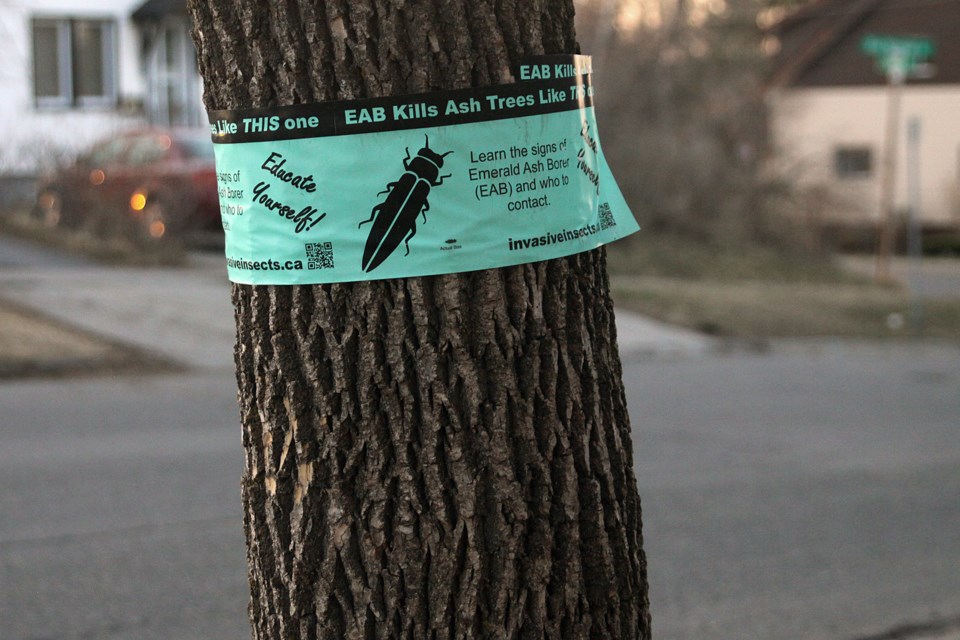THUNDER BAY – Confirmed finds of the emerald ash borer in Thunder Bay remain relatively low, which the city’s forestry supervisor largely attributes to its difficulty identifying until the beetle reaches maturity.
The tree-destroying invasive species, which was first detected with eight findings in Thunder Bay in 2016, had an additional 12 located last year through 100 traps set up throughout a variety of areas in the city.
“It is a very difficult insect to find when it’s young. It’s very small and it’s only when the adults come out and enter the pheromone traps we put out that gives us a snapshot of where it is in the city,” city forestry supervisor Mike Dixon said to Thunder Bay city council, which on Monday night received an update on its management strategy.
“Right now it’s a very small infestation but it’s definitely there.”
The first confirmed finding of the emerald ash borer was made at the corner of Memorial and Fourth avenues. Along with those two roadways, the beetle was also found on First Avenue, Sixth Avenue, High Street, Frankwood Avenue and Norah Street South.
One year later those locations spread to include the surrounding area of the original find, as well as north of the Thunder Bay Expressway and multiple successful traps in Westfort.
“It has been noted that the bug itself is pretty lazy. It will hitchhike on cars, buses, bicycles, whatever is moving throughout the city,” Dixon said.
The city’s climate – particularly having a period of warming followed by an immediate cold snap – seems to be having an impact on the emerald ash borer’s growth.
“The insect appears to be following a two-year lifespan as opposed to the one year that was found in Southern Ontario,” Dixon said, adding similar observations have been made in Duluth.
“We’re fortunate we were able to find the insect at its early stages in the ground zero in the Intercity area. It is spreading across the city. We are finding more trees that have evidence of the (emerald ash borer) in them but it’s not spreading at a large rate at this time.”
City council in October 2016 approved an active management strategy, a $6.3 million plan over 10 years to address Thunder Bay’s 6,300 boulevard and parks ash trees. The strategy includes treating 50 per cent of the 3,400 eligible mature trees – 1,700 trees – and the removal and replacement of the remaining 4,600.
Trees selected for treatment are applied with a biopesticide every second year. Last year 835 trees were treated. Another 114 trees were removed and 198 were replaced.
“This is a terrible, terrible thing that’s happening to the city. It’s going to cost us millions of dollars,” Coun. Andrew Foulds said.
“I hope that given it’s a two-year cycle that gives us the opportunity to do the analysis and the work we need to. I don’t think we should be taking the foot off the pedal at all in terms of this strategy. Maybe this is an opportunity to get out in front of it. Maybe two, three, four, five years from now we can save more than we originally forecasted.”
City administration said residents can contact the forestry department and request having a public tree treated and saved, though they would be doing it at their own cost.
Bay Street resident Anneli Tolvanen presented a letter to council, along with a petition of nearly 150 signatures, calling for trees on the corridor between Secord Street and Hillcrest Park to be saved.
“That’s a well trafficked neighbourhood and enjoyed by everybody around Thunder Bay coming up and down Bay Street going to the Hoito for pancakes and running up to Hillcrest Park,” Tolvanen said. “That street would be very unattractive without those trees.”
